Sandön and Hoheneichen
The ships Sandön and Hoheneichen sank in 1975 and 1959 near the coast of Skåne, south of the village Kåseberga. In 2018, the Swedish Agency for Marine and Water Management (SwAM) carried out investigations and operations to recover oil from them.
The shipwrecks are close to a nature reserve
The shipwrecks are located about 12 to 22 kilometers from the coast of Skåne at a depth of 18 to 30 meters with the keel pointing upwards. They were on the Swedish Maritime Administration's list of environmentally hazardous shipwrecks in Swedish waters. Moreover, they were on the top half of the list of the 30 most acute environmentally hazardous shipwrecks, according to SwAM's environmental risk assessment.
There are two coastal nature reserves nearby Norra Sandskogen and Hagestad. The area Sandhammaren-Kåseberga in the vicinity is also classified as a Natura 2000 area according to the European Union’s Birds and Habitats Directive. The area has a high biological value, with very diverse flora and insect fauna. It is a popular destination for recreation and tourism.
Expected oil leakage
Simulations with the oil spill forecasting tool SeaTrackWeb showed that an uncontrolled leakage of oil from these shipwrecks would have ended up near Kåseberga and Ale’s Stones, and then moved towards the city of Ystad.
The information available about Sandön and Hoheneichen prior to the investigations indicated that there was oil left in the wrecks. No leakage had been detected or reported since the wreckage of the vessels. Moreover, in August 2018, the Coast Guard did a video survey that showed that the wrecks were intact and without any major damage to the bunker tanks.
No oil found after two weeks
SwAM’s investigation and oil recovery operations were carried out by the company Marine Works AB, following a call-off from the framework agreement.
The work with the on-site investigation and oil recovery operation on the two shipwrecks lasted for two weeks in November 2018. Several holes were drilled in the hull at the location of the oil and ballast tanks according to the drawings. Despite this, there was no oil detected in the wrecks, which indicates that the oil has leaked out over the years.
Cost of the measures taken
The recovery operation on the two shipwrecks Sandön and Hoheneichen amounted to a cost of SEK 5 912 000. It was funded by the Swedish Government’s budget post 1:4 for the remediation and restoration of contaminated areas.
Background
Sandön
- Sandön was built in 1959 by Gravdal's shipbuilding in Sunde, Norway, for Skibs A/S in Hagesund, Norway.
- On January 4, 1975, when Sandön was heading towards Vaasa in Finland from Helsingborg, a heavy fire started. The crew was rescued but attempts to extinguish the fire or tow the ship failed. Sandön curved and sank about four nautical miles southeast of Kåseberga, Skåne. There is no information of oil leakage during the wreckage.
- Sandön is located at a depth of 18 meters and is lying upside down. The shipwreck is heavily damaged in the superstructure due to the fire. According to the Swedish Maritime Administration she had 40 tons of diesel oil on board when she sank.
Hoheneichen
- Hoheneichen was built at the shipyard Hugo Peters Wewelsfleth in Germany during the years of 1956 and 1961. She was one of nine sister ships in a series of small coastal vessels that sank due to stability-related accidents.
- On January 8, 1959, Hoheneichen travelled from Söderhamn to Lübeck. She was 13 nautical miles south-east of Ystad when the ship was hit by a large wave that partially filled the ship, and some of the cargo on deck went overboard. Eventually, the ship capsized and sank. Eight of nine crew members survived and were able to get to the rescue fleet. The vessel floated upside down for a while before it sank. There is no information of oil leakage during the wreckage.
- The shipwreck is lying on the side at a depth of between 21 to 31 meters. According to information from the Hamburg University of Technology, there was a total of 18 tons of oil on board during the wreckage.
Click here to see a map of the most environmentally hazardous shipwrecks in Swedish waters.
Videos from Sandön and Hoheneichen
See SwAM's youtube channel for videos from the work carried out on the shipwrecks.
Photos from the investigation
Slideshow from the investigation of Sandön and Hoheneichen and the media day on November 12, 2018.



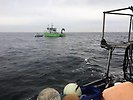
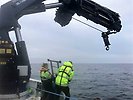
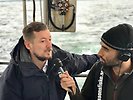

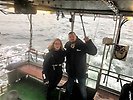
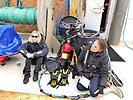
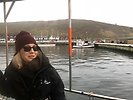
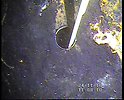
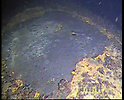
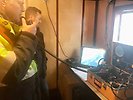
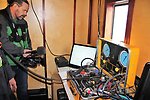


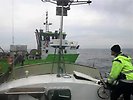
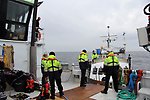

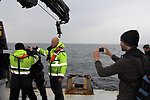
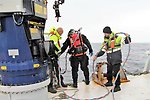
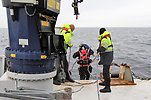
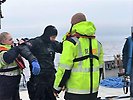
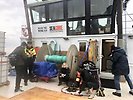
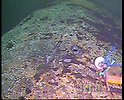
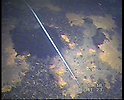
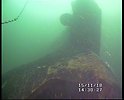
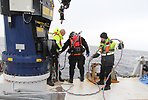
%20vraksanering-sandon-25--fredrik-lindgren-stor.jpg)


